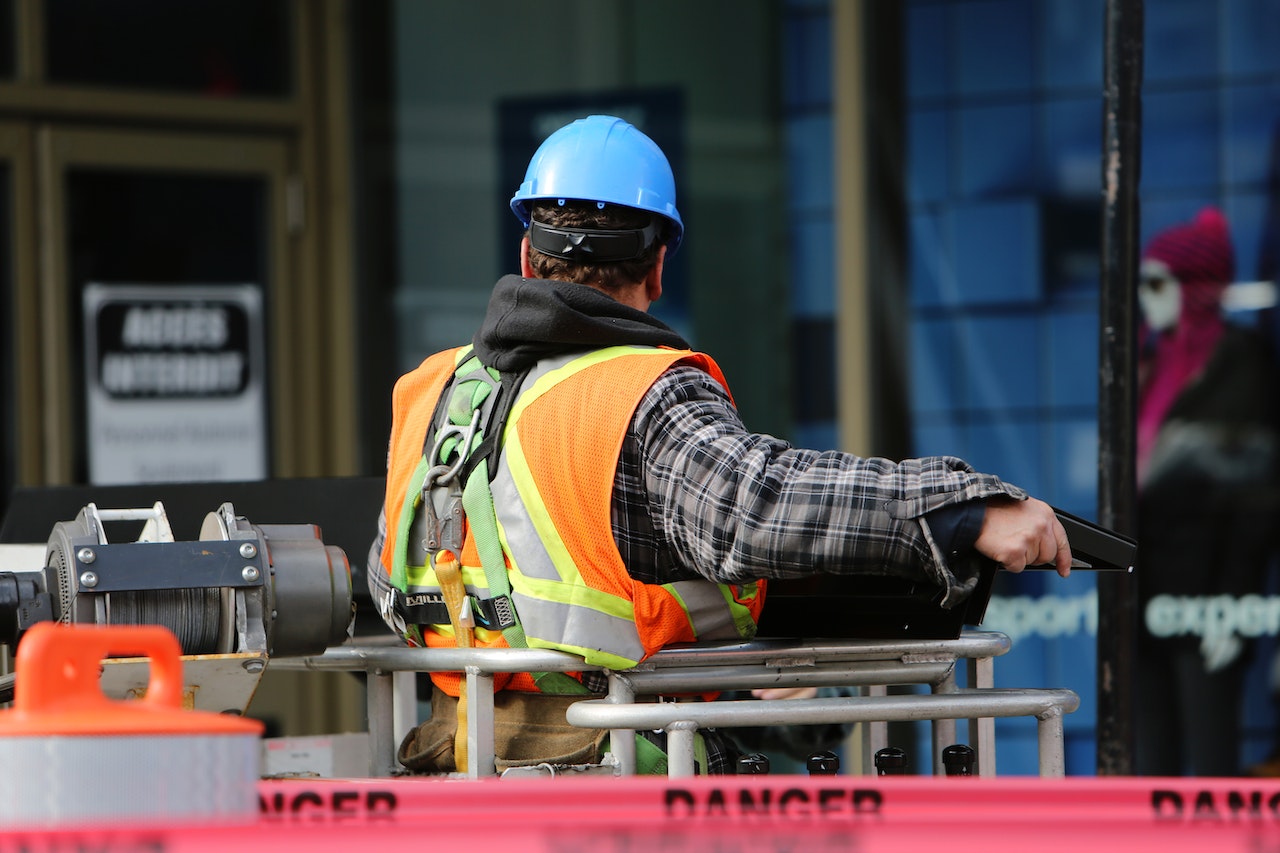Establishing a safe and healthy workplace is crucial for any organisation. As a human resources (HR) manager, you play a vital role in fostering a safety culture within your company.
By implementing effective health and safety protocols, you not only protect your employees from potential hazards but also contribute to their overall well-being, job satisfaction, and productivity.
From establishing clear safety policies and procedures to providing comprehensive training and resources, HR managers can take several steps to ensure that safety becomes an integral part of the company’s values and operations. Doing so can foster an environment where employees feel secure, valued, and motivated to contribute their best work.
By following the guidelines in this guide, you can enhance safety awareness, reduce the risk of accidents and injuries, and create a workplace where employees can thrive.
Characteristics of a safe work culture
Safety should be a top priority for all HR managers when defining and developing a company’s workplace culture.
What does a safe work culture entail? Here are some essential characteristics:
- Safety is the highest priority (even above things like productivity and meeting deadlines)
- Everyone is held accountable and expected to contribute to a safe environment
- Safety procedures are created based on feedback from on-site workers
- All management levels understand and agree upon the importance of safety
- Safety supervisors receive support to do their jobs effectively
- Communication is encouraged
- Employees receive regular training
- Employees have easy access to the company safety protocols and procedures
- All team members strive for continuous improvement and a better safety record
Benefits of a safe work culture
A safe work culture benefits all employees. The following are four specific ways the company can improve by prioritising safety:
Increased employee satisfaction
When employees know higher-ups care about their safety, they feel happier at their jobs, have better relationships with management, and are more likely to stick around.

Increased productivity
Having everyone follow the company’s safety protocols results in fewer accidents and interruptions, making it easier for employees to stick to schedules and meet deadlines.
Decreased legal concerns
A safe workplace is less likely to experience on-site injuries, workers’ compensation claims, and potential legal challenges.
Improved reputation: A company that cares about employee safety will likely be more popular among job seekers, meaning it’s easier to attract top talent during hiring periods.
The role of HR in building a culture of safety
A human resources manager and their team are essential to establishing rules and guidelines that increase workplace health and safety. What does this look like in action, though?
Listed below are some specific ways HR can contribute to a culture of safety:
Encourage others to care about workplace safety
Getting everyone on board is crucial to building a safe and healthy company culture. They must understand why safety is important and what they get from following health and safety protocols.
The HR department should include two crucial messages in every training meeting or discussion:
- Accidents and injuries are unacceptable at this company
- The business benefits from safety through reduced costs, improved morale, and increased productivity
Getting others invested in safety helps tie the company’s safety program to other values, such as innovation or integrity. Doing so further drives home the importance of safety to the company and its overall culture.
Get all employees involved in updating and enforcing safety protocols
Because all employees can benefit from precise and thorough safety and security procedures, they should be involved in updating and enforcing them.
HR should seek buy-in from managers, executives, and other higher-ups when working to improve and implement new safety plans. Otherwise, they may experience friction when they try to enforce a rule and get undermined by a colleague.
Employees should also learn about their role in fostering health and safety in the workplace. For example, they should be able to offer suggestions or provide feedback. They should also understand when to report incidents (and to whom).
Provide positive reinforcement
Instead of waiting until something goes wrong and punishing an employee for a mistake or oversight, focus on positive reinforcement. In other words, when employees practice safe behaviour or follow a specific rule in the company’s safety plan, recognise their efforts and thank them for their commitment.
You can also gamify the process of following health and safety protocols. For example, you can challenge different teams at the company to see which one has the fewest safety incidents in a given period.
Set the proper tone during hiring and onboarding
Ensure people understand how much your company values health and safety from the start.
When conducting interviews during the hiring process, make sure interviewees know that safety matters to you and your team and that they will be expected to follow specific guidelines if hired.
During onboarding, provide more information on the importance of workplace health and safety and educate employees on the company’s safety protocols. If they receive this information from day one, it’ll be easier to follow the rules and keep safety in mind.

Image: Pexels
Make training an ongoing practice
New hires aren’t the only ones who should receive safety training. The HR department should also ensure all team members participate in ongoing training sessions.
It’s easy to get complacent when you do the same tasks day after day. This complacency can cause employees to get lax about certain safety rules.
Requiring regular training helps employees to stay sharp and ensure they consistently follow specific rules and guidelines.
Promote overall employee well-being
It’s easier for employees to stick to health and safety rules and uphold the company’s values when they have opportunities to care for their overall well-being.
Human resources managers should ensure team members have access to health and wellness support, including comprehensive medical care and mental health support.
Employees who feel cared for on multiple levels (physically, mentally, emotionally, etc.), will be more committed to the company and upholding its policies.
Foster open communication channels
Effective communication is essential in creating a culture of safety within an organisation. HR plays a crucial role in fostering open channels of communication that encourage employees to voice their concerns, suggestions, and observations regarding workplace safety.
To facilitate such communication, HR can implement the following strategies:
Establish regular safety meetings
Conduct regular safety meetings where employees can openly discuss safety-related matters, share their experiences, and propose ideas for improvement. These meetings provide a platform for everyone to contribute to the safety culture and ensure that concerns are addressed promptly.
Implement anonymous reporting systems
Encourage employees to anonymously report safety hazards or incidents through suggestion boxes or digital platforms. This allows individuals to speak up without fear of repercussions, promoting a culture of transparency and trust.
Actively listen and respond
HR should actively listen to employees’ safety concerns and promptly address them. Whether investigating potential hazards, updating safety protocols, or providing necessary resources, demonstrating a commitment to employee well-being builds trust and reinforces the importance of safety within the organisation.
By fostering open communication channels, HR creates an environment where employees feel empowered to contribute to improving workplace safety.
Embrace technology for safety enhancement
In today’s digital age, HR can leverage technology to enhance safety practices and streamline safety-related processes. Adopting innovative solutions not only strengthens the safety culture but also demonstrates a commitment to staying up-to-date with advancements in the field. Here are some ways HR can embrace technology for safety enhancement:
Implement a digital incident reporting system
Move away from traditional paper-based incident reporting and implement a digital system that allows employees to report accidents, near misses, or safety concerns online. This digital platform can streamline incident management, facilitate quick responses, and provide valuable data for analysis and improvement.
Utilise mobile safety apps
Encourage employees to use mobile safety applications that provide real-time access to safety protocols, hazard alerts, and emergency procedures. These apps can serve as handy references and reminders, ensuring employees have vital safety information at their fingertips.
Invest in wearable safety technology
Explore using wearable devices equipped with sensors to monitor employee well-being and detect potential safety risks. For example, smart badges or wristbands can track factors like fatigue levels or proximity to hazardous areas, helping prevent accidents and promoting a safer working environment.
By embracing technology-driven solutions, HR is committed to harnessing innovation to enhance workplace safety and encourages employees to adapt to new safety practices.
Encourage continuous learning and skill development
To foster a positive safety culture, HR should prioritise continuous learning and skill development related to safety practices. By investing in training and educational programmes, HR can ensure that employees have the knowledge and skills necessary to maintain a safe working environment. Consider the following strategies:
Provide specialised safety training Offer specialised training programmes that address specific safety concerns relevant to the organisation. This could include sessions on operating machinery safely, handling hazardous materials, or practising proper ergonomics. Ensure that training materials are engaging, interactive, and tailored to different job roles within the company.
Foster a learning culture
Promote a culture of continuous learning by encouraging employees to pursue safety certifications, attend industry conferences or workshops, and participate in webinars or online courses related to workplace safety. Create incentives, such as recognition or career advancement opportunities, to motivate employees to enhance their safety knowledge and skills.
Conduct safety drills and simulations
Regularly organise safety drills and simulations to test employees’ preparedness and response to potential emergencies. These drills can cover scenarios such as fire evacuations, first aid procedures, or natural disaster response. Evaluate the effectiveness of these drills and use the findings to improve safety protocols and employee training.
By prioritising continuous learning and skill development, HR supports a proactive approach to safety and equips employees with the tools they need to mitigate risks effectively.
Establish safety committees or task forces
Creating safety committees or task forces empowers employees to contribute to developing and implementing safety initiatives actively. HR can play a vital role in establishing and supporting these groups by:
Encouraging employee involvement
Invite employees from different departments or teams to participate in safety committees or task forces. Seek volunteers passionate about safety and willing to take an active role in improving workplace conditions.
Setting clear objectives
Define the objectives and scope of the safety committees or task forces, ensuring they align with the overall safety goals of the organisation. Encourage members to brainstorm innovative ideas, propose safety improvements, and share best practices.
Providing resources and support
Equip safety committees or task forces with the necessary resources, including a budget, training materials, and access to relevant safety data. HR should provide guidance, facilitate meetings, and ensure that the recommendations and initiatives put forth by these groups receive appropriate attention from management.
By involving employees in safety committees or task forces, HR promotes a sense of ownership and shared responsibility for workplace safety, fostering a culture where everyone feels empowered to contribute to a safer working environment.
In Summary
A safe and healthy workplace culture benefits all employees at your company – including you and members of your department! As a human resources manager, you are in a unique position to create and carry out safety protocols that protect team members and encourage job satisfaction, employee loyalty, and more successful recruitment efforts. Follow the guidelines discussed above to start making health and safety integral parts of your company culture.
About the Author
Yasmine Mustafa is the CEO & Co-Founder of ROAR, a technology company dedicated to cultivating safer workplaces. The company’s patented workplace panic button solution provides employees with one press of a button to protect your people, here and now.


